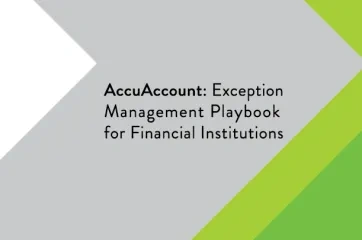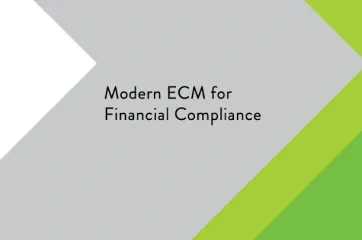Enterprise Content Management in Banking
Enterprise Content Management (ECM) in banking refers to the strategies, technologies, and tools used by financial institutions to capture, manage, store, preserve, and deliver content and documents throughout their lifecycle. In the context of banking, ECM systems enable efficient handling of both structured and unstructured data, such as account holder records, contracts, regulatory documents, emails, and other types of collateral. By digitizing and automating content and information management processes, ECM helps banks and credit unions improve operational efficiency, ensure compliance with regulations, enhance security, and provide better customer service, all while reducing the risk of data loss and unauthorized access.
ECM Use Case Examples
ECM systems in banking streamline various processes by digitizing, organizing, and managing critical documents and data, enabling improved efficiency, compliance, and security across operations. Here are several key use cases demonstrating how ECM supports banks and credit unions:
Document Capture and Scanning
Converting physical documents (e.g., loan applications, account opening forms) into digital formats for easier storage and retrieval.
Account Holder Record Management
Storing and organizing account holder-related data (e.g., account details, transaction history) in a secure, easily accessible manner.
Contract Management
Managing digital copies of contracts (e.g., loan agreements, service contracts) with version control, approvals, and audit trails to ensure compliance.
Email and Communication Archiving
Storing and managing email communications (e.g., account holder inquiries, internal memos) to ensure compliance with regulatory requirements and facilitate easy retrieval.
Regulatory Compliance Management
Ensuring that all documents and records are managed according to financial industry regulations (e.g., Basel III, MiFID II), including retention policies and audit logs.
Workflow Automation
Streamlining internal processes like loan approval or fraud detection by routing documents through predefined approval workflows.
Digital Signatures
Implementing secure digital signing for documents (e.g., loan contracts) to replace traditional paper-based signatures, improving efficiency and security.
Benefits of Enterprise Content Management Software for Banks & Credit Unions
ECM systems in banking deliver numerous benefits by improving operational processes, ensuring compliance, and enhancing data security. Below are key advantages of implementing ECM software in banks and credit unions:
Operational Efficiency
Reduces the need for physical storage and manual document retrieval, leading to faster decision-making and improved customer service.
Regulatory Compliance
Ensures banks adhere to industry regulations related to data storage, retention, and privacy.
Improved Security
Enhances data security by storing sensitive documents in encrypted, access-controlled systems.
Cost Reduction
Decreases the costs associated with paper, printing, and physical storage.
Collaboration and Accessibility
Facilitates seamless sharing and collaboration on documents across departments while ensuring proper access controls
Learn More
Learn more about the different ECM solution architectures, including document-centric, account-centric, member/customer-centric, and person-centric platforms.
- Read more about Document-Centric ECM Software
- Read more about Account-Centric ECM Software
- Read more about Member / Customer-Centric ECM Software
- Read more about Person-Centric ECM Software
Learn more about Alogent’s ECM solution suite and its person-centric approach







